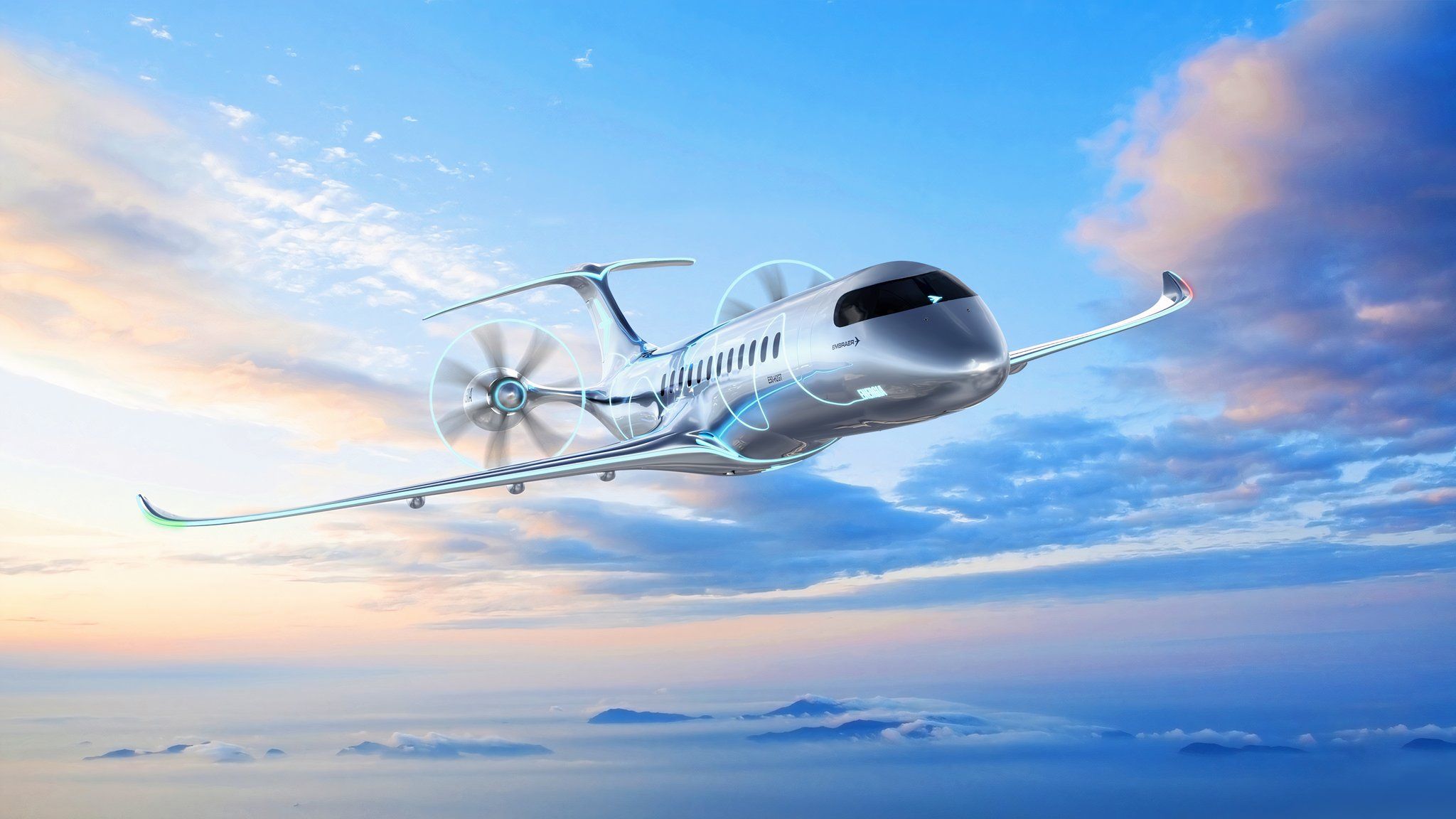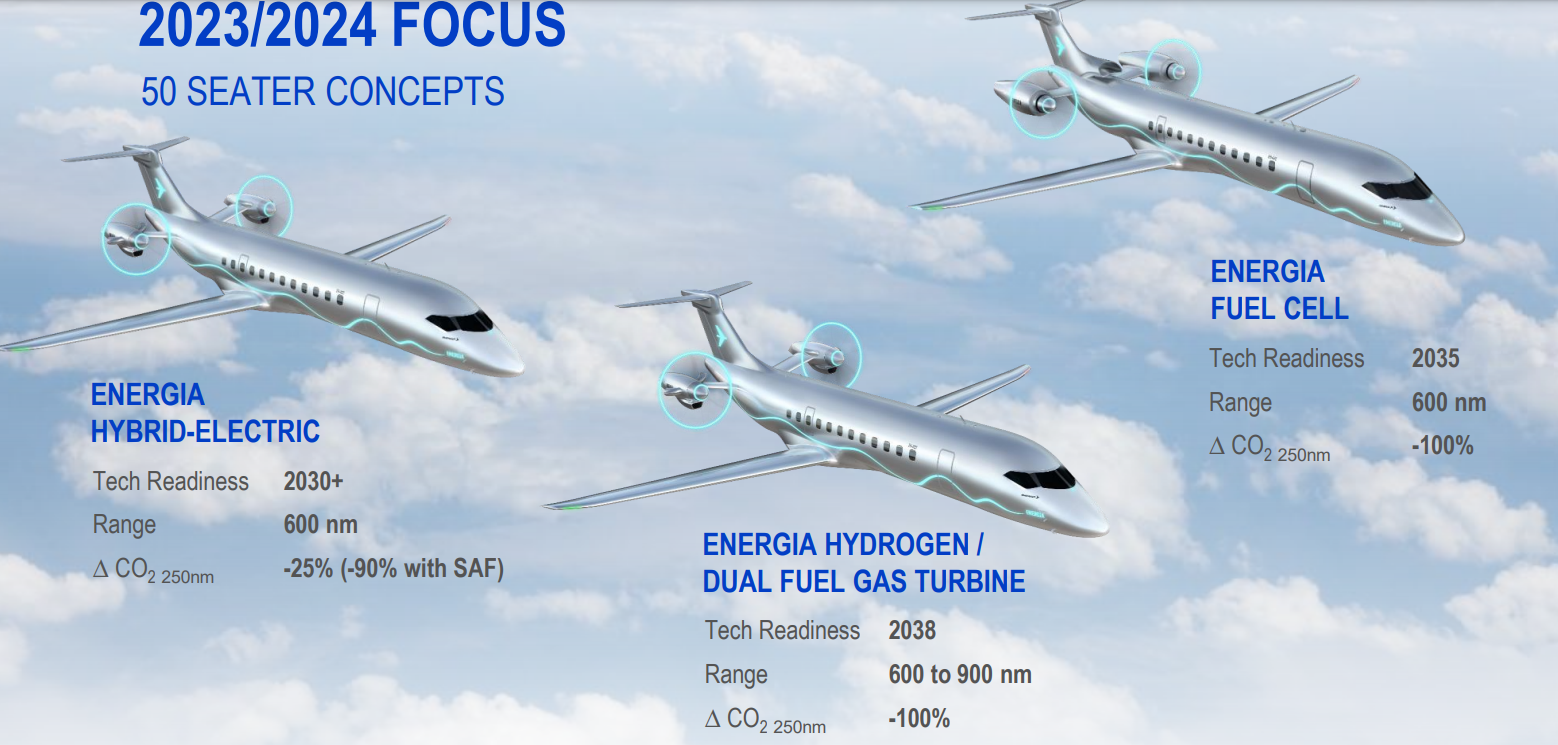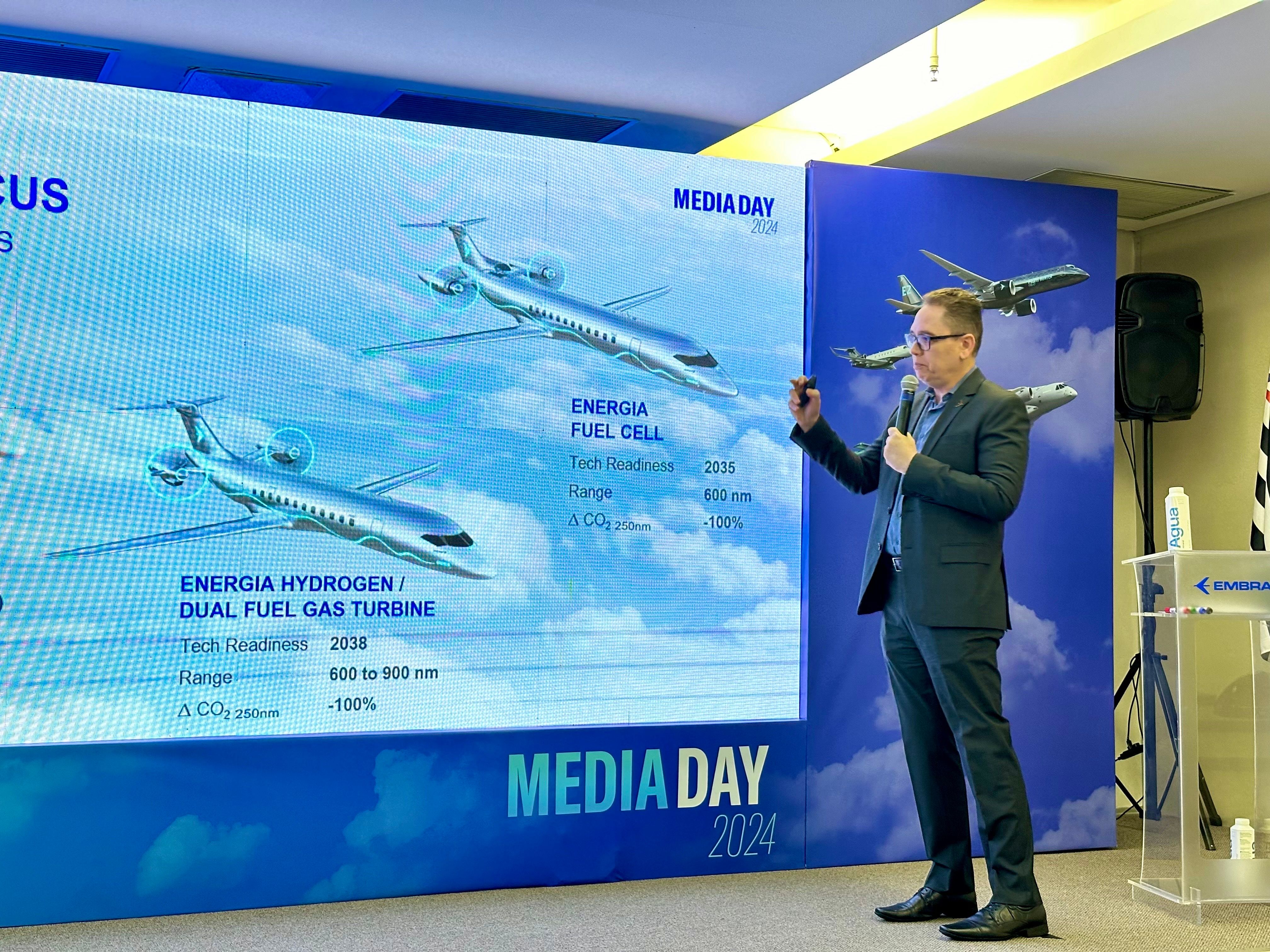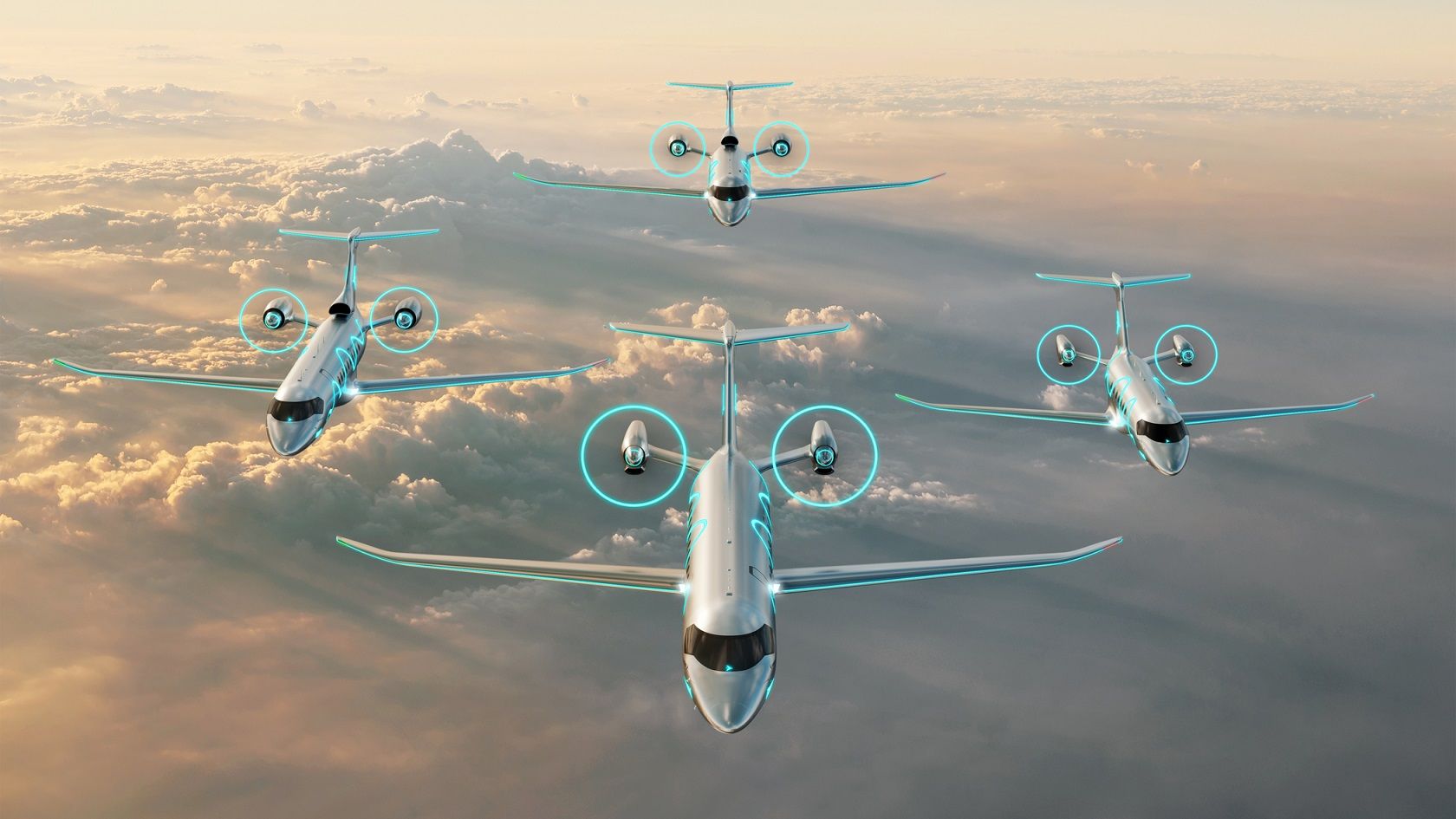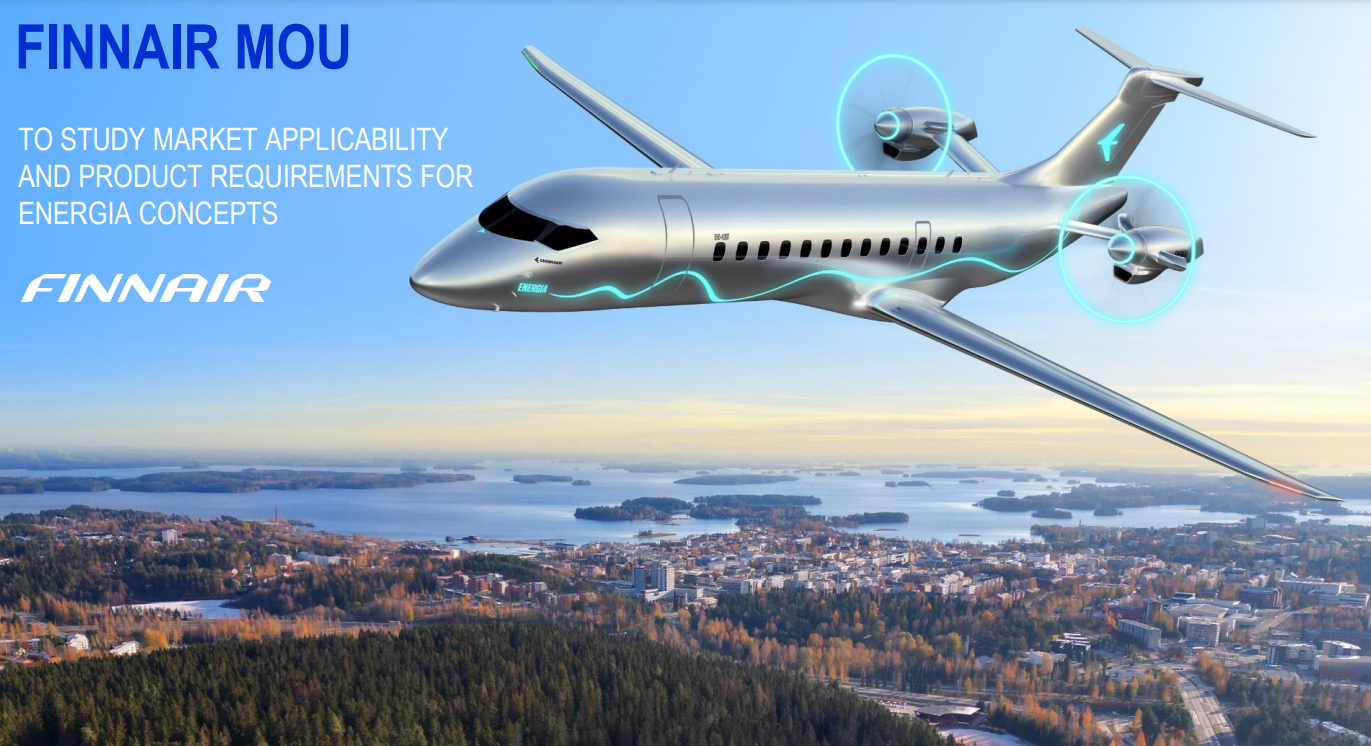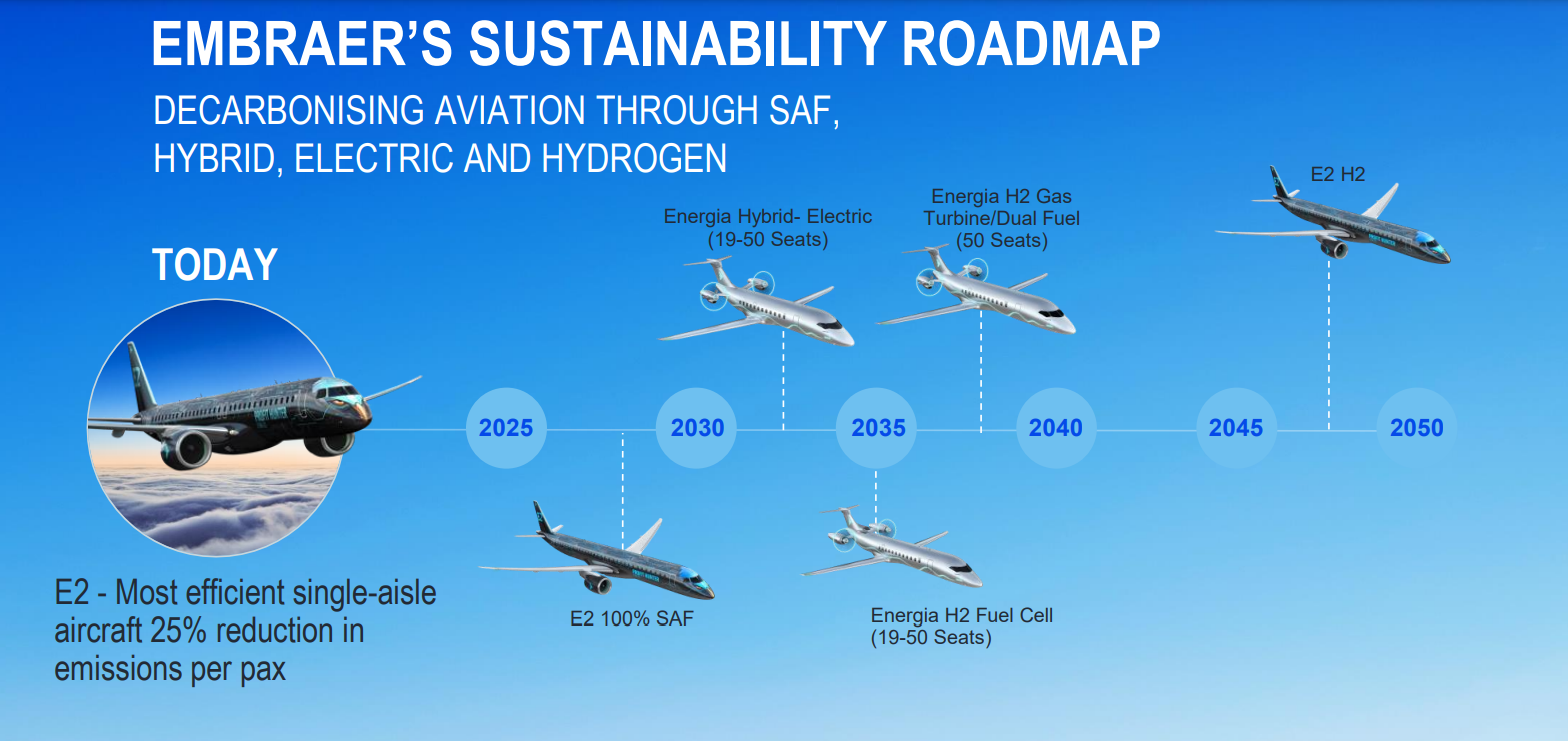Summary
- Embraer will now study Energia concepts for up to 50-seater aircraft based on airline feedback.
- Three propulsion options for these larger planes include hybrid-electric, pure hydrogen, and dual-fuel.
- Partnering with airlines is vital for Embraer to understand how the aircraft will be used in real operations.
Embraer has today revealed plans to expand its Energia future aircraft study to include larger aircraft. When first announced in 2021, the focus for Energia was very much on the smaller end of the spectrum, with concepts addressing the 19 – 30 passenger segment.
Now, Embraer will expand the scope of the study to include larger aircraft up to 50 seaters, led by feedback from airline partners.
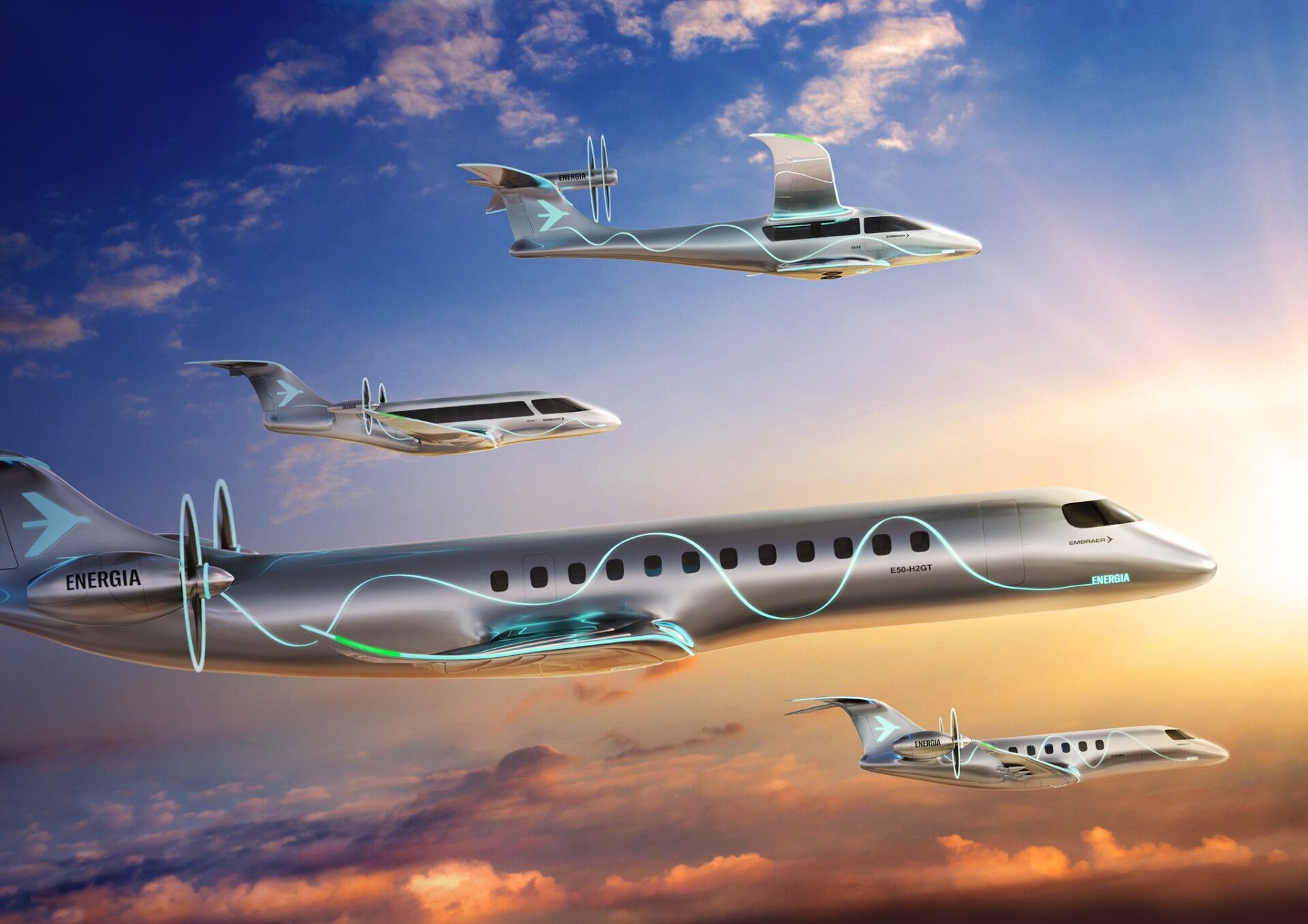
Related
Exclusive: Embraer’s CEO Explains Its New Aircraft Concepts
Energia will include up to 50 seater aircraft
Speaking today at Embraer’s media days at the company headquarters in Sao Jose Dos Campos, VP of Marketing Rodrigo Silva e Souza explained the rationale behind expanding the scope of Energia:
“We have been interacting a lot with customers; we had an advisory board meeting late last year, and the feedback from customers was … that they would like to see bigger aircraft.
“So, we are taking these concepts one step further to fifty seats. So now we are studying not just 19 to 30 but also 50-seat aircraft with those new propulsion solutions and three different options.”
Those three options were also outlined today and encompass options for hybrid-electric, pure hydrogen, and dual-fuel hydrogen/gas turbines. Of the three concepts, the easiest to develop will be the hybrid-electric, which the company anticipates will fly around 600 NM at 25% lower CO2 emissions (90% if SAF is used as the conventional fuel).
The pure hydrogen concept will come later, perhaps in 2035 and beyond, but the dual fuel concept will be by far the most challenging to develop. Embraer doesn’t expect to see any entry into service until at least 2038.
Photo: Joanna Bailey | Simple Flying
What’s the dual fuel concept?
Rodrigo Silva e Souza explained to Simple Flying that the dual fuel concept is designed to make future sustainable aircraft more flexible.
To fly a hydrogen aircraft to any airport, that airport will need to have the infrastructure in place to refil the hydrogen fuel on site. Installing such infrastructure is expensive, and will likely take quite some time to roll out around the world.
Photo: Embraer
In the interim, an engine that can run on both hydrogen and conventional jet fuel could be a solution to enable operators to fly to more destinations regardless of the facilities in place.
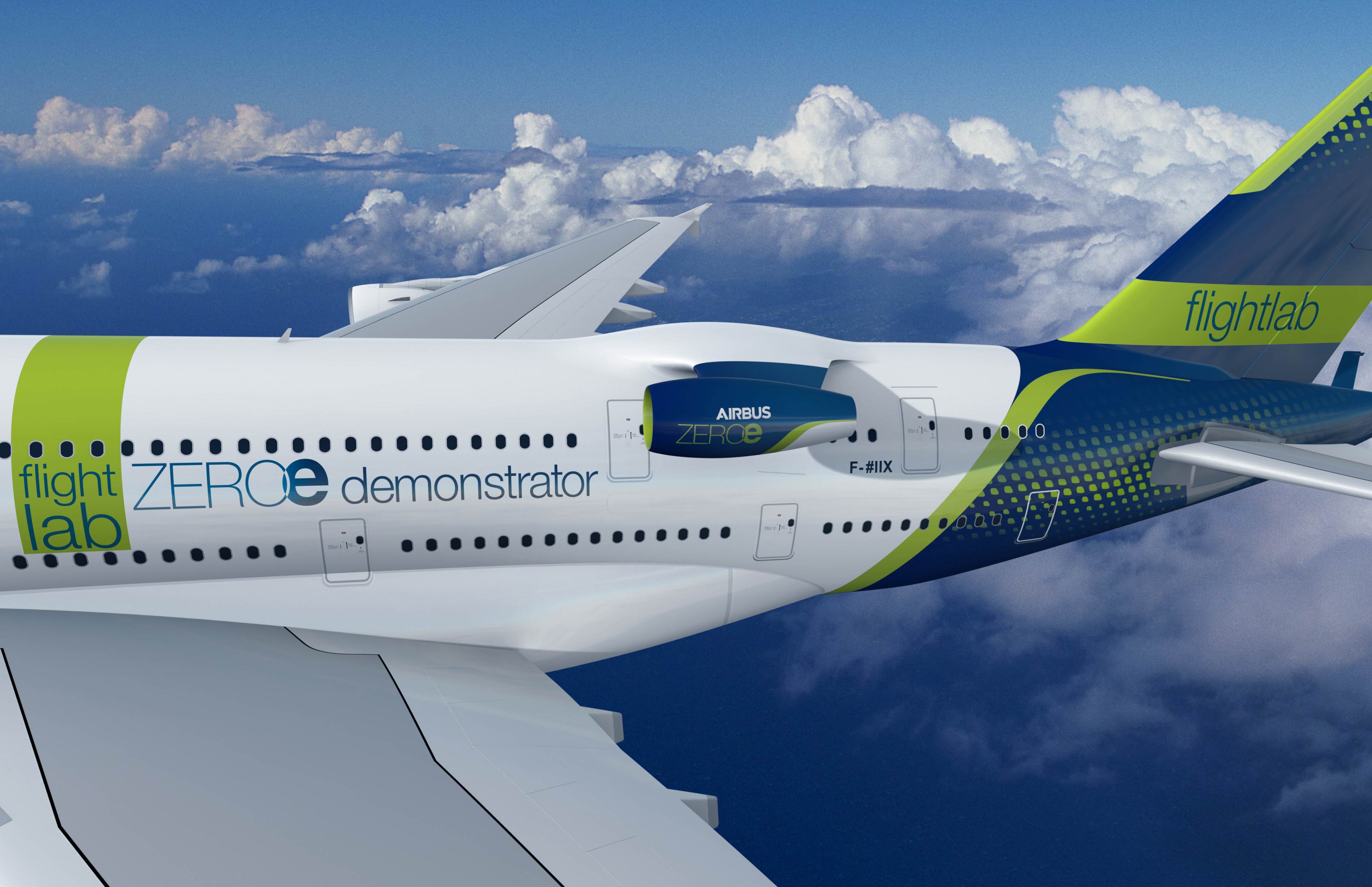
Related
How Does A Hydrogen Jet Engine Work?
Airbus and CFM International partner on the manufacturer’s A380 testbed.
Working with the airlines
For Embraer, the most important element of the Energia project is its advisory board, which comprises airlines, suppliers, and many other stakeholders.
In particular, the airlines will play a key role in helping the manufacturer understand how the aircraft will be used and what the airlines really want from them. Mr Silva e Souza explained:
“We’ll keep exploring those and talking to customers because one key element for bringing these aircraft to life is understanding how airlines would deploy new aircraft and these different machines with different characteristics.”
To advance this understanding, Embraer today announced an MOU with Finnair to join Energia’s advisory board.
Finnair joins other announced partners on the project, including American Airlines, Widerøe, Republic Airways, Air New Zealand, China’s Ruili Airlines, and many more. In all, around 20 airlines are participating in the research that will advise and inform the development of these concepts.
Of course, the concepts and technologies studied under Engergia are not guaranteed to make it to market at all. But if it works for the airlines, makes commercial sense, and is technologically possible, these aircraft could be the future of flying.

